How dApps Are Disrupting Traditional App Ecosystems
Discover how decentralized apps (dApps) are transforming tech by replacing traditional apps with blockchain-powered, user-controlled, transparent systems.

For many years, apps like Facebook, Uber, and PayPal have operated straightforwardly: they run on servers owned by their respective companies. These companies control everything: how the app works, where your data goes, and what rules you must follow.
However, a new kind of app is now changing the game. These are called dApps, short for decentralized applications. They don’t rely on one company or server. Instead, they run on blockchain networks, which are shared systems that anyone can use and help maintain.
In this blog, we’ll explore what dApps are, how they work, what sets them apart from traditional apps, and how they’re transforming the way we use technology.
What Are dApps?
A dApp is an app that runs on a blockchain or a peer-to-peer network. This means no single company owns it. Instead, many computers around the world work together to keep it running.
Here are some key features of dApps:
- Decentralized: No central authority controls the app.
- Open-source: Anyone can see the code and suggest changes.
- Blockchain-based: All actions are recorded on a public ledger.
- Smart contracts: Rules are written in code and automatically followed.
For example, instead of logging into a dApp with your email and password, you use a crypto wallet like MetaMask. This wallet verifies your identity and allows you to interact with the app.
Traditional Apps vs. dApps
Let’s compare how traditional apps and dApps work:
| Feature | Traditional Apps | dApps |
| Control | One company | Shared across many users |
| Data Storage | Central servers | Blockchain or peer-to-peer network |
| User Login | Email/password | Crypto wallet |
| Rules & Logic | Controlled by the company | Smart contracts |
| Transparency | Hidden from users | Open and visible to all |
| Censorship | The company can block content | Hard to censor |
| Downtime Risk | Can crash if the server fails | More stable and distributed |
How dApps Work
To understand how decentralized applications (dApps) function, it’s essential to examine the key technologies that underpin them. Unlike traditional apps that rely on centralized servers and companies, dApps use blockchain technology to operate in a more open, secure, and user-controlled way.
Let’s break down the main components that make dApps possible:
Blockchain: The Foundation of Trust
A blockchain is a unique type of digital ledger. Imagine a notebook that is shared by thousands of people around the world. Every time someone writes something in it—like a transaction or a message, it gets copied to everyone’s notebook. Once it’s written, it can’t be erased or changed. This makes the information very secure and trustworthy.
Each entry in the blockchain is called a block, and these blocks are linked together in a chain. That’s why it’s called a “blockchain.” Because everyone has a copy, it’s very hard for anyone to cheat or lie. If someone tries to change something, the others will notice and reject the change.
Smart Contracts: Code That Runs Itself
Smart contracts are like digital rules written in computer code. They reside on the blockchain and automatically perform actions when specific conditions are met. Think of them like vending machines: you put in money, press a button, and the machine gives you a snack. No human needs to be involved.
Smart contracts are utilized in many dApps to facilitate payments, trades, votes, and other transactions. Because they run automatically and can’t be changed once deployed, they help build trust between users.
Consensus Mechanisms: Agreeing on the Truth
In traditional apps, one company decides what’s true. For example, Facebook decides what posts are allowed, and PayPal decides which payments go through. But in dApps, there’s no single boss. So how do they decide what’s real?
This is where consensus mechanisms come in. These are systems that help all the computers (called nodes) in the blockchain network agree on what happened. It’s like a group of people voting to decide what’s true.
There are different types of consensus mechanisms:
- Proof of Work (PoW): Computers solve hard puzzles to prove they did the work. This is used by Bitcoin.
- Proof of Stake (PoS): People lock up some of their crypto to show they care about the network. The more you stake, the more likely you are to be chosen to confirm transactions. This is used by Ethereum and many newer blockchains.
- Delegated Proof of Stake (DPoS): Users vote for trusted representatives to confirm transactions.
These systems make sure that everyone plays fair and that the blockchain stays accurate and secure. They also help prevent fraud, hacking, and double-spending.
Real-Life Examples of dApps
Decentralized applications (dApps) are no longer just ideas or experiments. They are already being utilized in numerous industries and by millions of people worldwide. These apps are transforming how we manage our finances, engage in gaming, share content, and make decisions online.
Let’s explore some of the most popular and exciting examples of dApps across different categories:
Finance (DeFi – Decentralized Finance)
In traditional finance, banks and other institutions control how money moves. You need permission to borrow, lend, or trade, and you often pay high fees. DeFi dApps eliminate these middlemen, allowing users to manage their money directly.
- Uniswap: This is a decentralized exchange that allows users to swap cryptocurrencies instantly. There’s no need to sign up or go through a bank. You simply connect your wallet and trade tokens. Uniswap utilizes smart contracts to automate all transactions.
- Aave: Aave is a lending and borrowing platform. Users can lend their crypto and earn interest, or borrow money by providing collateral. There’s no paperwork, no credit checks, and no waiting. Everything is handled by smart contracts, making it fast and secure.
These platforms give people more control over their finances and open up opportunities for anyone with an internet connection.
Gaming
Gaming is one of the fastest-growing areas for decentralized applications (dApps). Traditional games are controlled by companies that own all the characters, items, and rewards. With dApps, players can truly own their in-game assets and even earn money while playing.
- Axie Infinity: In this game, players collect and battle creatures called Axies. Each Axie is an NFT, meaning it’s a unique digital item that the player owns. Players can earn tokens by winning battles and completing tasks, which can be traded for real money.
- Bomb Crypto: This is a play-to-earn game where players collect characters and complete missions to earn rewards. The characters and items are stored on the blockchain, allowing players to buy, sell, or trade them freely.
These games create new ways for players to earn income and enjoy more freedom in how they play and interact.
NFTs (Non-Fungible Tokens)
NFTs are digital items that are unique and can’t be copied. They are used for art, music, collectibles, and a variety of other purposes. dApps in the NFT space help creators and collectors buy, sell, and showcase their digital assets.
- OpenSea: This is one of the largest NFT marketplaces. Users can browse, buy, and sell digital art, music, and collectibles. Artists can upload their work and sell it directly to fans without needing a gallery or agent.
- Blur: Blur is a newer NFT trading platform that offers advanced tools for serious collectors and traders. It allows users to manage multiple listings, track prices, and make fast trades.
These platforms give creators more control over their work and help collectors find rare and valuable digital items.
Governance
In traditional organizations, decisions are typically made by a small group of individuals at the top. With dApps, communities can make decisions collectively using voting systems built on blockchain technology.
- DAOs (Decentralized Autonomous Organizations): A DAO is a group of people who collectively manage a project or fund. Members hold tokens that give them voting power. They can vote on proposals, budgets, and changes. Everything is transparent and recorded on the blockchain.
DAOs are utilized to manage investment clubs, charitable funds, and even entire companies. They give people a voice and make decision-making more democratic.
Social Media
Social media platforms like Facebook and Twitter are owned and operated by large corporations. They decide what content is allowed, who gets paid, and how data is used. dApps are creating new social platforms that give users more control and allow them to earn rewards.
- Lens Protocol: This is a decentralized social media platform where users own their profiles and content. You can post, follow, and interact just like on traditional platforms, but you keep control of your data and can earn tokens for your activity.
- Friend.Tech: This app enables users to connect with others and earn rewards for sharing content and building communities. It uses blockchain to track interactions and reward users fairly.
These platforms are transforming how we share and connect online, granting users greater freedom and ownership.
Benefits of dApps
People are becoming increasingly interested in decentralized applications (dApps) because they offer numerous advantages over traditional apps. These benefits are not just for tech experts, they matter to everyday users too.
Let’s examine the key reasons why dApps are gaining popularity and how they enhance the way we utilize digital services.
More Privacy
One of the biggest benefits of dApps is that they protect your privacy. In traditional apps, you typically need to provide your name, email address, phone number, and location. This personal information is stored on company servers, which can be hacked or misused.
With dApps, you don’t need to share any personal details. Instead, you use a crypto wallet to log in and interact. Your wallet is like your digital identity. It doesn’t reveal who you are, but it proves that you’re a real user. This means you can use the app without worrying about your data being collected, sold, or leaked.
For individuals who value privacy, especially in countries with stringent internet regulations, dApps provide a safer and more private way to go online.
Full Control
In traditional apps, companies control your data, your money, and even your digital items. They can delete your account, block your access, or change the rules at any time. You’re basically renting space in their system.
dApps flip this model. When you use a dApp, you retain ownership of your data. You also own your digital assets, like tokens, NFTs, or in-game items. These are stored in your wallet and recorded on the blockchain so that no one can take them away from you.
This gives users true ownership. Whether you’re trading crypto, playing games, or sharing content, you stay in control. You decide what to keep, what to share, and what to sell, without asking permission from a company.
Transparency
Have you ever wondered what happens behind the scenes in your favorite app? In traditional systems, most of the logic and decisions are hidden. You don’t know how your data is used, how prices are set, or why certain content is shown to you.
This transparency builds trust. Users can verify that the app is fair, that rules are followed, and that no one is cheating. It also helps developers and communities collaborate to enhance the app.
No Middlemen
In traditional apps, there are often middlemen, such as banks, lawyers, agents, or platforms, that take a cut of every transaction. They slow things down, add fees, and sometimes block access.
dApps remove these middlemen by using smart contracts. These contracts automatically manage tasks such as payments, trades, and agreements. For example, if you want to sell a digital item, the smart contract checks the payment and delivers the item instantly.
This makes dApps faster, cheaper, and more efficient. You don’t need to wait for approval, pay extra fees, or deal with third parties. Everything happens directly between users.
Security
Security is a big concern in today’s digital world. Traditional apps store data on central servers, which can be hacked, shut down, or misused. If the server fails, the app stops working.
dApps utilize decentralized networks, which means data is stored across multiple computers (called nodes) worldwide. This makes it much harder for hackers to attack or shut down the system. Even if one computer fails, the others keep the app running.
Also, because dApps use blockchain technology, all actions are recorded and protected by cryptography. This adds another layer of security, making it very difficult to change or falsify information.
Challenges of dApps
Decentralized applications (dApps) offer numerous exciting benefits, but they also present their own set of challenges. While they are powerful tools that promote user control and transparency, they are still in the early stages of development. To become widely accepted and used by everyday people, dApps need to overcome several obstacles.
Let’s take a closer look at the main problems they face:
Complex User Experience
One of the biggest hurdles for dApps is that they can be difficult to use, especially for beginners. Unlike traditional apps, which typically require only an email and password for sign-up, dApps often necessitate the setup of a crypto wallet, the management of private keys, and an understanding of how blockchain transactions work.
For someone new to the world of crypto and Web3, this can feel overwhelming. If you lose your private key, you could lose access to your account and assets forever; there’s no “forgot password” option. Additionally, the interfaces of many dApps are not as polished or user-friendly as those of popular apps like Instagram or PayPal.
Slow Speeds and High Costs
Another challenge is that some dApps run on blockchains that are slow or expensive to use. For example, when many people use a blockchain like Ethereum simultaneously, the network can become congested. This leads to high gas fees (transaction costs) and slow processing times.
Imagine trying to buy a digital item and having to wait several minutes, or pay a fee that’s higher than the item itself. This can make dApps frustrating and impractical for everyday use.
Limited Adoption
Although dApps are gaining popularity, most people still use traditional apps. The average user may not be familiar with what a blockchain is, how a wallet works, or why decentralization is important. This lack of awareness slows down adoption.
Additionally, many dApps focus on crypto trading or NFTs, which may not appeal to everyone. To reach a wider audience, dApps need to expand into areas such as education, healthcare, entertainment, and communication, and they must offer clear value to users.
Legal and Regulatory Issues
Governments around the world are still trying to understand and regulate decentralized applications (dApps). Because dApps don’t have a central owner or company, it’s hard to apply traditional laws to them. This creates legal uncertainty for developers, investors, and users.
For example, if a dApp is used for lending money, who is responsible if something goes wrong? If people lose money due to a bug in a smart contract, can they take legal action against the developers? These questions don’t have clear answers yet.
The Future of dApps
Although decentralized applications (dApps) face some challenges today, their future appears promising. Developers, businesses, and communities worldwide are working diligently to enhance the functionality of dApps and make them more accessible to everyday users.
As technology continues to grow, we can expect dApps to become faster, easier to use, and more powerful. Let’s explore some exciting trends and possibilities for the future of dApps:
Better User Interfaces
One of the biggest goals for dApp developers is to make these apps easier to use. Currently, many dApps require users to understand wallets, private keys, and blockchain terminology, which can be confusing for beginners. In the future, dApps will have cleaner designs, simple navigation, and step-by-step guides to help users get started.
Imagine using a dApp that feels just like your favorite mobile app , smooth, fast, and friendly, with the added benefits of privacy, control, and transparency. Developers are already building tools that hide the complex aspects of blockchain and make dApps more accessible to everyone, including those who have never used cryptocurrency before.
Cross-Chain Tools
Today, many dApps are built on a single blockchain, such as Ethereum or Solana. This can limit how they interact with other apps or networks. However, in the future, we’ll see more cross-chain tools that enable dApps to operate across multiple blockchains. This means users can move assets, data, and services between different platforms without any trouble.
For example, you might use a wallet on Ethereum to purchase an item on a dApp built on Polygon, all within a seamless experience. These tools will make dApps more flexible, more connected, and more useful for a wider range of tasks..
AI + dApps
Artificial intelligence (AI) is another powerful technology that’s starting to mix with dApps. In the future, we’ll see AI-powered dApps that can make smart decisions, offer personalized services, and help users manage their digital lives more easily.
For example, an AI-powered finance dApp could analyze your spending habits and suggest ways to optimize your financial savings. A social media dApp could recommend content based on your interests, without spying on your data. AI can also help detect fraud, enhance security, and automate tasks within smart contracts.
Big Companies Joining In
Initially, dApps were primarily developed by small teams and independent developers. However, big companies are now starting to explore how they can utilize dApps in their own services. Banks are testing blockchain for payments and loans. Game studios are incorporating NFTs and cryptocurrency rewards into their games. Social media platforms are looking at ways to give users more control over their content.
Of course, these companies must respect the values of decentralization, such as user ownership and transparency. If they do, they can help build a better internet for everyone.
Eco-Friendly Blockchains
One concern about blockchain is that some networks consume a significant amount of energy. This can be bad for the environment. However, the good news is that many new blockchains are utilizing eco-friendly methods to operate their systems.
In the future, we’ll see more dApps built on these green blockchains. This means users can enjoy the benefits of decentralization without harming the planet. Developers are also working on ways to measure and reduce the carbon footprint of dApps, thereby contributing to a more sustainable digital world.
Final Thoughts
DApps are revolutionizing the way we develop and utilize digital applications. By giving users more control, privacy, and ownership, they offer a fresh alternative to traditional, centralized systems. Though still evolving, their potential to transform industries is enormous.
Whether you’re a developer, entrepreneur, or simply curious about the future of technology, now is the perfect time to explore dApps. They’re more than a passing trend; they represent a new, user-first vision for the internet.
Date
1 minute agoShare on
Related Blogs

How dApps Are Disrupting Traditional App Ecosystems
1 minute ago

The Impact of AI on Blockchain Fraud Detection
4 days ago

Real-World Asset (RWA) tokenization
5 days ago

Gamified DeFi: How Play-to-Earn Models Are Reshaping User Engagement
10 days ago








